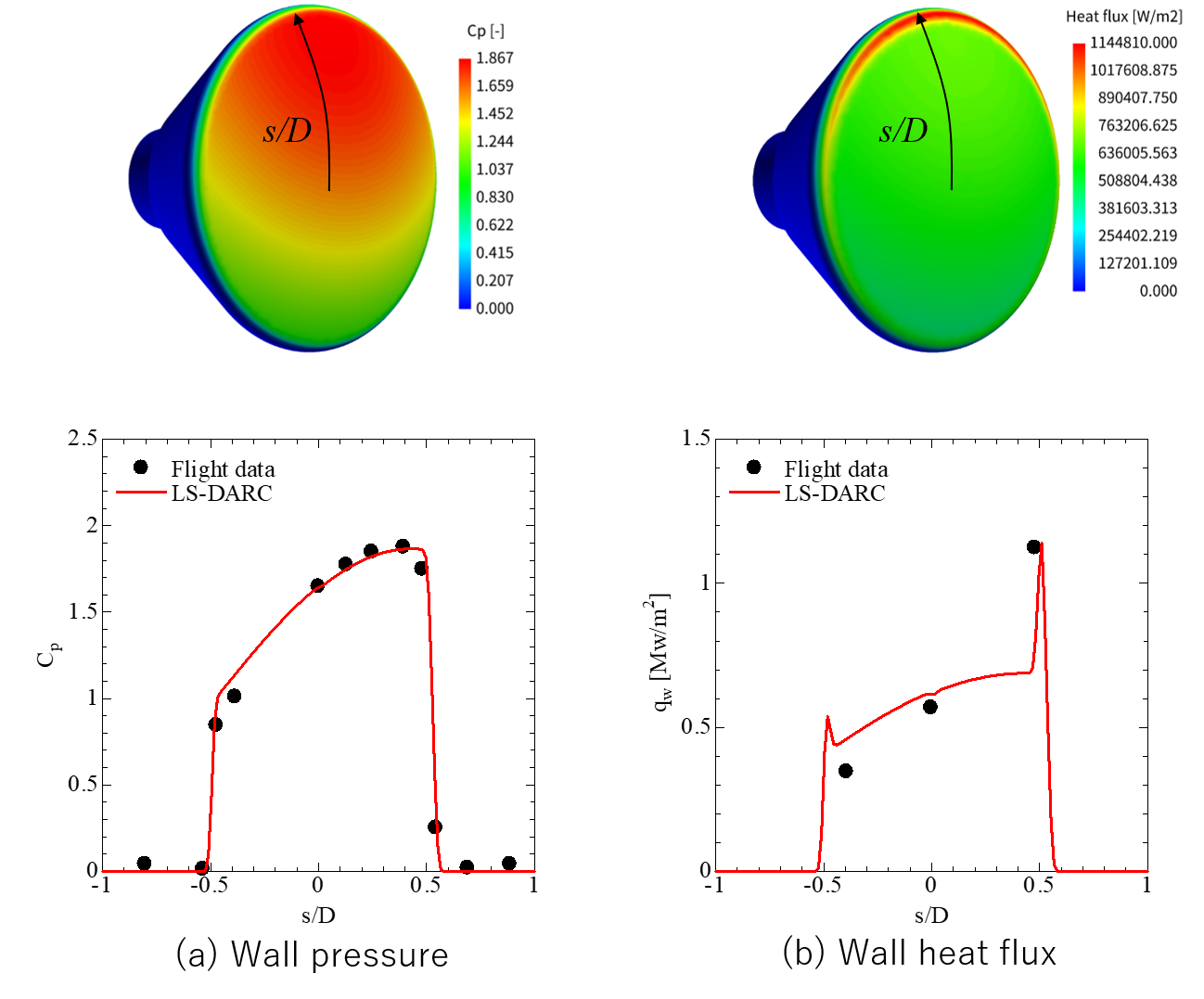Development of High-fidelity Re-entry Safety Analysis Methods
JAXA Supercomputer System Annual Report April 2020-March 2021
Report Number: R20EG3216
Subject Category: Research and Development
- Responsible Representative: Eiji Sima, Research and Development Directorate, Research Unit III
- Contact Information: Hideyo Negishi(negishi.hideyo@jaxa.jp)
- Members: Takayuki Ito, Hideyo Negishi, Yoichi Ohnishi, Miki Nishimoto, Yu Daimon, Osamu Fukasawa, Shinji Ohno, Takenori Nakajima, Takashi Amemiya, Hironori Fujiwara, Hiroumi Tani, Keiichiro Fujimoto, Tetsufumi Ohmaru, Taroh Fukuda, Masashi Toyama, Shohta Sutoh, Akimitsu Terunuma, Kota Akai, Satoshi Ukai, Masaru Kusano
Abstract
High-fidelity re-entry safety analysis code LS-DARC is under the development in JAXA in order to realize the accurate EC predictions and the design-for-demise for the rocket upper statges and space-crafts.6 Dof trajectory analysis, aerodynamics, heat flux, 3D thermal conductance can be considered by the coupling analysis code based on the reduced order models. Since models in LS-DARC is versatile and its turn-around time is very short, it has been applied wide range of aerospace engineering applications such as the research and development activities for Japan's flagship launch vehicles, satellites, spacecrafts, and re-usable space transportation systems.
Reference URL
N/A
Reasons and benefits of using JAXA Supercomputer System
Probabilistic re-entry safety analysis based on the multi disciplinary coupling analysis with considering various uncertainty factors is essential. In addition consideration on the design parameter effect should also be considered. In addition, in-house computational environment is essential also for security reason. Consequently, JSS2 is essential.
Achievements of the Year
In FY2020, the high-fidelity re-entry safety analysis code "LS-DARC" was validated against simple geometries presented in open literatures, experimental data acquired by the high enthalpy wind tunnel "HIEST", and flight data aquired by the re-entry data measurement system installed in H-IIB launch vehicle in terms of aerodynamic force and wall heat flux prediction. The computed results of those validatioin cases showed reasonable agreement with computed results by other CFD or similar analysis tools, experimental data, and flight data. Figure 1 shows pressure coefficient Cp and wall heat flux distributions on the appollo capsule geometry. The Cp and wall heat flux profiles computed by LS-DARC compare well to the flight data. As a result, the capability of LS-DARC was confirmed.
Publications
N/A
Usage of JSS
Computational Information
- Process Parallelization Methods: MPI
- Thread Parallelization Methods: MPI
- Number of Processes: 32 - 192
- Elapsed Time per Case: 168 Hour(s)
Resources Used(JSS2)
Fraction of Usage in Total Resources*1(%): 0.03
Details
Please refer to System Configuration of JSS2 for the system configuration and major specifications of JSS2.
| System Name | Amount of Core Time(core x hours) | Fraction of Usage*2(%) |
|---|---|---|
| SORA-MA | 21,367.69 | 0.00 |
| SORA-PP | 1,732.79 | 0.01 |
| SORA-LM | 0.00 | 0.00 |
| SORA-TPP | 11,463.61 | 1.08 |
| File System Name | Storage Assigned(GiB) | Fraction of Usage*2(%) |
|---|---|---|
| /home | 591.04 | 0.54 |
| /data | 18,763.54 | 0.36 |
| /ltmp | 6,434.75 | 0.55 |
| Archiver Name | Storage Used(TiB) | Fraction of Usage*2(%) |
|---|---|---|
| J-SPACE | 4.46 | 0.15 |
*1: Fraction of Usage in Total Resources: Weighted average of three resource types (Computing, File System, and Archiver).
*2: Fraction of Usage:Percentage of usage relative to each resource used in one year.
Resources Used(JSS3)
Fraction of Usage in Total Resources*1(%): 0.10
Details
Please refer to System Configuration of JSS3 for the system configuration and major specifications of JSS3.
| System Name | Amount of Core Time(core x hours) | Fraction of Usage*2(%) |
|---|---|---|
| TOKI-SORA | 2,822.43 | 0.00 |
| TOKI-RURI | 14,033.04 | 0.08 |
| TOKI-TRURI | 106,549.08 | 8.59 |
| File System Name | Storage Assigned(GiB) | Fraction of Usage*2(%) |
|---|---|---|
| /home | 844.77 | 0.58 |
| /data | 82,974.73 | 1.39 |
| /ssd | 7,279.58 | 3.80 |
| Archiver Name | Storage Used(TiB) | Fraction of Usage*2(%) |
|---|---|---|
| J-SPACE | 4.46 | 0.15 |
*1: Fraction of Usage in Total Resources: Weighted average of three resource types (Computing, File System, and Archiver).
*2: Fraction of Usage:Percentage of usage relative to each resource used in one year.
JAXA Supercomputer System Annual Report April 2020-March 2021



